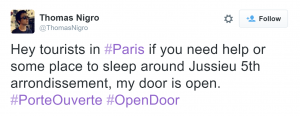So a couple weeks ago in class we learned about the Top 7 social media trends that will dominate 2016, according to Forbes. Well, I wanted to learn more and stumbled upon the “Top 10 Digital Marketing Stats of the Week”. In this post, I’ll not only explore some of the top 10 trends (I won’t go over all of them but feel free to look at them yourself!), but also see if they are aligned with the Top 7 trends that were shared in class.
- Basket abandonment has risen 15% since 2010
What does basket abandonment mean? Well, this means that people are shopping in-store less and less. Check out this Vancity Buzz article that pokes fun of the Black Friday sales. There was literally no one in stores. This is pretty much in line with Forbe’s prediction that online BUY buttons will DOMINATE.
- Insider fraud on the rise in technology, media and telecoms industry

Uh oh. As we see digital marketing on the rise, it means that we need to be a lot more careful with our privacy and personal information online. As Forbes predicted, “User privacy concerns will hit an all-time high”. This is no surprise and in my opinion, should be alarming. As our society becomes more comfortable with technology, we really need to think about the reprucussions and the bad guys that might be out there trying to steal our information. A great example would be the new “Hello” Barbie doll that just came out. This doll can apparently talk to your children, record information, and make sense of data. Click here to read more about the controversy surrounding this doll and how parents question whether it is safe, or just another tactic for marketers (like you and I!) to “steal” information for our own promotional ganis.
- Three in five marketers aren’t currently targeting Instagram users
Uhm…what!? Don’t worry, I was shocked too when I read this. According to the article, marketers are still late to the game, with “over half (53%) of marketers [planning] to make use of Instagram in 2016 to boost their sales.” What’s interesting is that 1 in 3 Instagram users actually buy products that they see on Instagram, this goes to support the rationale behind the # store, that I blogged about earlier in the term. Referencing the Forbe article, that predicts “fewer small platforms will emerge”, I wonder how long Instagram will be here to stay. While it is predicted that fewer platforms will emerge, it is only a matter of time before the next big thing, and for Facebook to be another “My Space” or “Nexopia”.
All in all, I’d say that the Forbes article is pretty accurate. But while I can see that our purchasing behaviors are changing drastically and that businesses will need to find a way to survive in the online space, I wonder what will happen to brands and companies that rely on the customer experience. Yes, people can buy your products online, but there is still something about touching the product, experiencing it, and being immersed in the customer experience. It will be interesting to see how these companies (especially in the luxury industry) will adapt.









